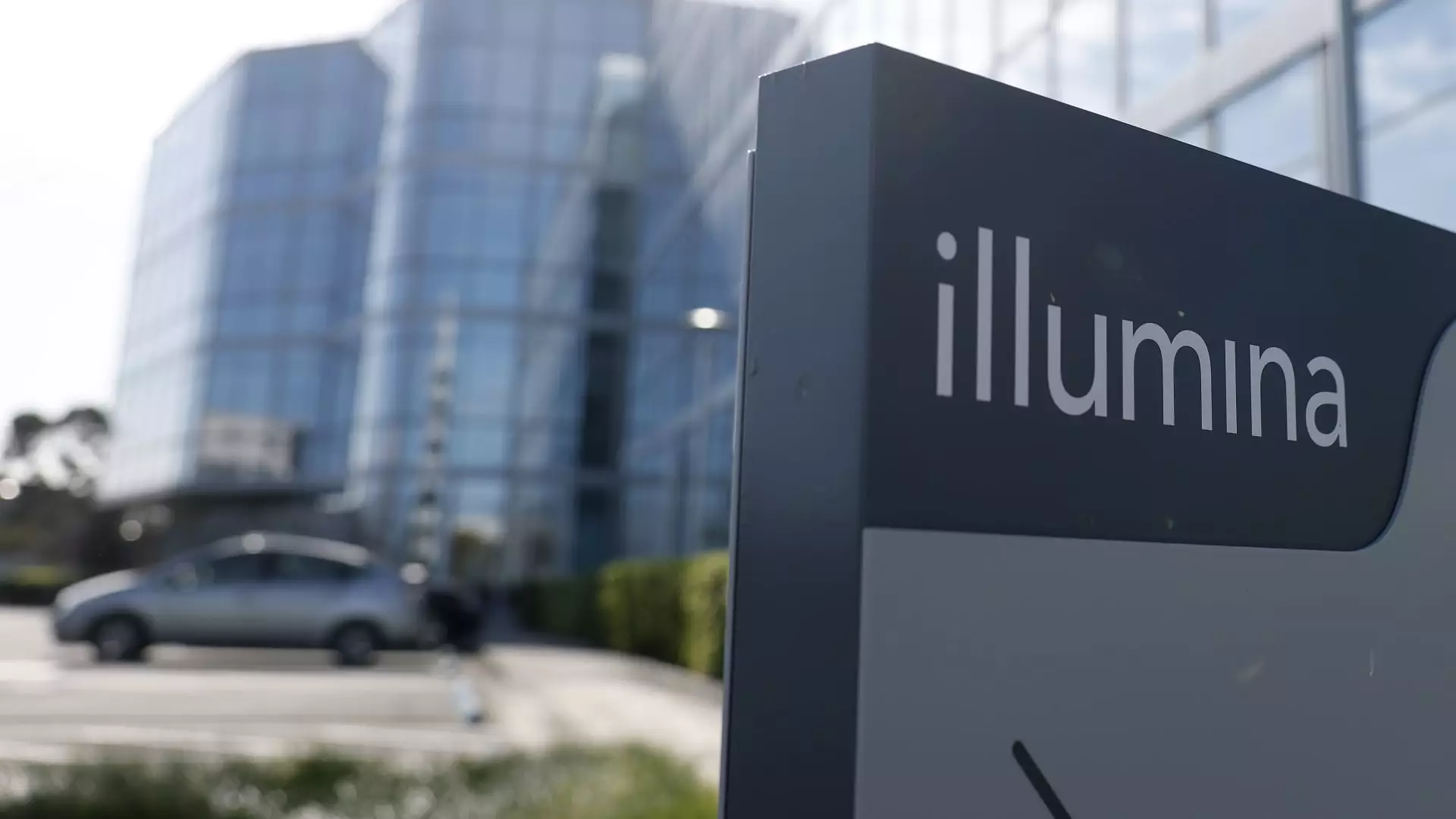In a world where genomic analysis is increasingly regarded as the backbone of modern medicine, Illumina Inc. has positioned itself as a market leader. The company specializes in sequencing and array-based solutions, offering an expansive range of products aimed at both research and clinical environments. However, what’s remarkable is how swiftly the context shifted for Illumina, transforming it from a poster child of biotech triumph to an emblem of corporate strife. With its stock price plummeting from an all-time high of $511 to a disheartening $80 in a few short years, one can’t help but question the company’s strategic direction and leadership.
On the surface, Illumina appears to be a titan, holding over 80% of the global market share in gene sequencing and boasting a formidable installed base of more than 20,000 machines. However, the path to such dominance has proven to be riddled with obstacles that have not only eroded its stock value but have also raised significant concerns among investors and industry analysts alike.
The Costly Grail Acquisition: A Cautionary Tale
If there’s one defining moment that summarizes Illumina’s woes, it is undoubtedly its fraught relationship with its subsidiary, Grail. Created in 2015 and spun off the following year, Grail was envisioned as a groundbreaking initiative focused on early cancer detection through genomic sequencing. But the tale darkened when Illumina attempted to reacquire Grail in 2021 for a staggering $8 billion, a move that was thwarted by regulatory bodies, notably the Federal Trade Commission and the European Union.
Such friction does not simply dissolve overnight. The European Commission not only rejected the acquisition but followed up with a significant fine, branding Illumina’s attempts as predatory behavior in a rapidly evolving marketplace. The chain of events paints a dire picture: a company once riding high on a wave of pandemic-driven success is now stymied by its own ambitious yet miscalibrated corporate strategies. It’s a stark reminder that in the world of business, even giants can stumble.
Geopolitical Headwinds and Regulatory Labyrinths
For a company that has relied significantly on a global supply chain, geopolitical tensions have proven to be another troublesome area for Illumina. The ongoing tumultuous relationships between the U.S. and both Russia and China have imposed restrictions that stifle potential markets. Illumina’s struggles in these regions cast a long shadow, further impacting its financial stability.
Moreover, Illumina faces an uncertain landscape surrounding the funding of biotechnology initiatives, primarily from the National Institutes of Health. The looming questions about federal financial support lead to a chilling effect on innovation, forcing companies like Illumina to think twice about resource allocation, research, and development. In a sector where staying ahead often requires substantial investment in cutting-edge technology, such uncertainties can be disastrous.
New Leadership: A Double-Edged Sword?
Among the flickers of hope illuminating the darkness for Illumina is the recent overhaul of its leadership team. The impending entry of Keith Meister from Corvex Management onto the board is heralded as a strategic triumph. Meister is a seasoned figure, known for turning companies around, with relationships in influential biotech circles. However, whether his expertise can translate into immediate gains for Illumina remains uncertain.
While new leadership is often seen as a beacon of hope, one must remember that it also inspires skepticism. Can Illumina recover from its past missteps, or is it destined to replicate them? The challenges presented by the transition to a new generation of sequencing technology, specifically the NovaSeq X, loom large. This evolution could trigger short-term financial strife, potentially leading to a downward spiral if not managed correctly.
The Razor-and-Blade Model and Its Dangers
While Illumina’s razor-and-blade business model—where the machinery itself offers lower margins but recurring consumables yield far higher returns—has proven successful, it’s important to highlight the inherent risks involved. With the market still reeling from the Grail debacle, the pressure to innovate increases. As margins fluctuate, any miscalculations in supply or inefficiencies in production could signal disaster. The company must balance its immediate bottom line with the long-term necessity of advancing its technology and service offerings.
Investor confidence is key, and amidst a convoluted narrative rife with struggle and setbacks, one has to wonder if Illumina can rekindle that trust. As the company pushes through natural evolution in the biotech field, the road ahead remains fraught with uncertainties and challenges that could alter the industry landscape forever.

